Three of these have published their grants for their financial year 2023: Milestone publish on a monthly basis so I have included theirs from July to May 23. I looked at these four gaming trusts in August last year and raised a complaint specifically about Dragon. This complaint widened to include these four.
You may recall the Stuff expose on Angel Childrens Education Foundation. While I believe nothing happened in terms of legal action, the closure of the organisation and the reticence of the Trustees to talk does make you question the nature of these grants.
Looking at the Grant distributions of these four pokies over the years we can see some growth in grants given. This is due to an increase in the number of venues under management: in 2017 they had 17 venues and 269 machines: by 30 June 2023 they had 39 venues and 595 machines. Indeed, Rano didn't start until 2018. The four also have a skew for Auckland / Waikato region, who of course were most affected by COVID in 2022.
I looked at the top 30 organisations getting funding from these four pokies over the 2023 year to date. 78% of the dollar value of those grants have gone to the top 30 organisations.
|
|
Rank in overall funding from all pokies |
Total Granted |
From this cluster |
|
Supreme Sikh |
7 |
$2,016,056 |
$371,632 (most comes from Akarana) |
|
New Zealand Culture and Media Group Ltd |
8 |
$1,934,936 |
ALL |
|
Inspired Families Foundational Trust |
23 |
$858,730 |
ALL |
|
Natural Environment Defence Fund (now Asian Community Engagement Trust) |
26 |
$757,805 |
ALL but $936 ex Lion |
|
Woman Care Trust |
34 |
$648,369 |
$163,892 balance from Akarana Grassroots and Four Winds |
Since stumbling across these operators over the past year I have learned a fair bit about leading indicators in what could be a tricky relationship between pokie, venue and charity: frequent amounts to relatively new organisations with a small number of trustees. With the analysis below I'm not saying these grants are dodgy. It may be that these are organisations who do great things in their communities, and that these four funders can be applauded for giving a leg up to new organisations. But if I were overseeing the integrity of the grant making system, I think I'd have a good look myself.
Of these organisations receiving funding, four groups registered as charitable trusts last year and one this year: below is what they got awarded in grants this financial year.
|
Name |
Amount |
No. of grants |
Date Registered |
|
Chinese Senior People Help Centre |
$109,510 all from Blue Sky |
12 |
28-06-22
|
|
Happy Valley Women and Children's Foundation |
$294,846 ($279,603 ex Blue Sky, balance from Rano and Milestone) |
16 |
20-10-22
|
|
Moana Sports and Cultural Trust |
$116,186 ($64,929 ex Blue Sky, balance from Dragon) |
10 |
05-05-22
|
|
New Zealand Culture and Arts Foundation |
$157,272 ($125,148 from Blue Sky, balance from Rano) |
12 |
23-05-22 |
|
Te Karere Community Trust |
$100,920 all from Blue Sky |
4 |
05-05-23 |
Organisations who registered as charities in 2021 received significant funding in the 2023 financial year.
|
Name |
Amount |
No. of grants |
Date Registered |
|
Angel Heart Charitable Trust |
$180,842 all from Blue Sky |
26 |
03-02-21 |
|
Metro Club Inc. |
$67,310 all from Rano |
5 |
09-04-21 |
|
New Zealand Culture & Media Group Limited |
$2,040,283 ($1.18m from Blue Sky, $25k from Milestone, and $99k ex Rano) |
80 |
27-04-21 |
|
New Zealand Edutech Trust Ltd |
$362,837 all from Blue Sky |
12 |
16-08-21 |
Sadly one of my favourite organisations, Sports Development Foundation, seems to have fallen off the funding list in 2022. This organisation has received $1.3m since inception in 2018. The old website used to talk up the trips they took to Snow Planet teaching kids how to ski. In 2021 they had a registered address at 211 Richardson Road, an address shared by Richardson's pub (yes you read that correctly - a kids sport charity operating out of a pub) for which they paid $78k in rent in their financial year ended March 2021.
I could go on. But here is my point. DIA is (I believe) looking at the issues previously raised. However, as I suspect is happening, the principals just shrug and start up again, just like Whack - a - mole. Indeed, as I have talked about in my last two pieces, these practices seem to be quite commonplace within the industry. If the regulator isn't going to do their job, then let others get on and do this! Heck, if I had a small slice of the over $200m tax income from the Class 4 pokie game I'd employ a lawyer, auditor, ex copper and some genius who can set up a database better than my Excel spreadsheets and I reckon we could stop this illness and get community income where it belongs: to helping organisations make their communities better. I think we now know what to look for, and the KPI would be that 100% of grants to 100% of organisations serve charitable purpose.
It would mean my blog would be far more boring, but boring is sort of what you want this grants to be.
I write about this stuff as I believe that we need to understand where funding comes from, where it goes, and how it gets there. No one else seems all that interested. As a citizenry we allow both those supplying money and those asking for money to operate, and as a community we need to ensure we have oversight over the organisations they choose to fund. Love to talk with you if you think this is at all interesting, and if you want to dive into the data a bit more than happy to do so. Check out my website http://www.delfi.co.nz/

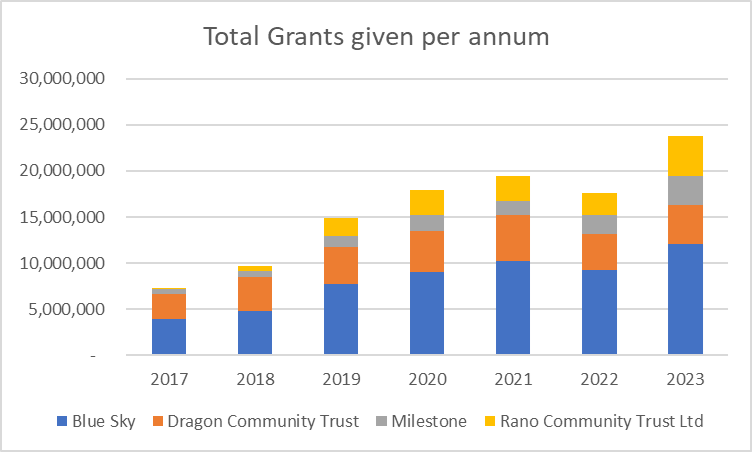
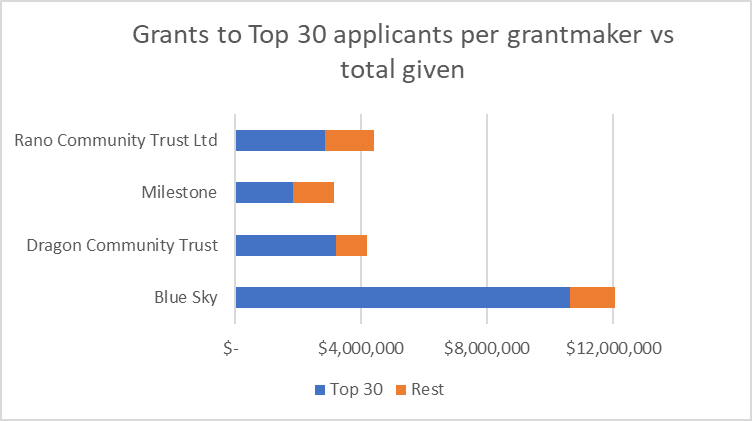

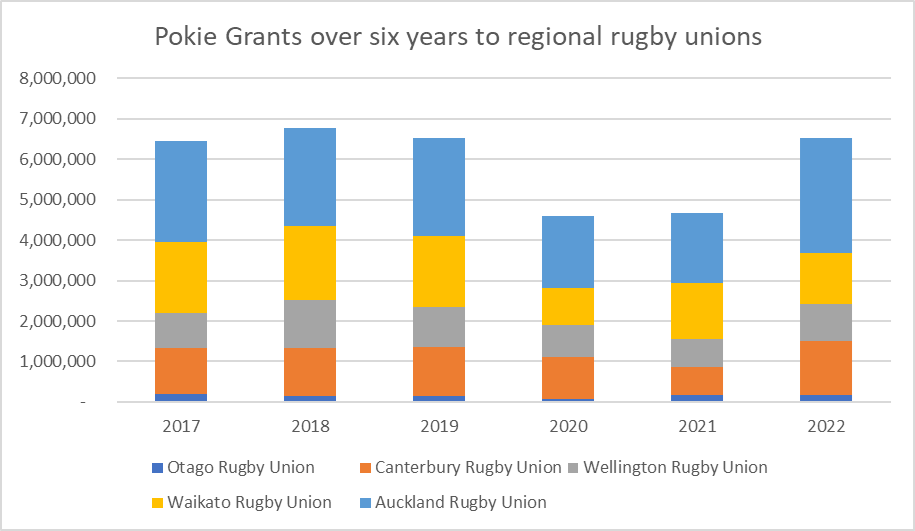


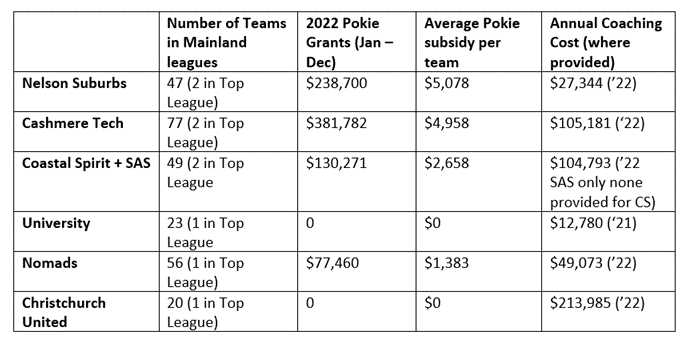

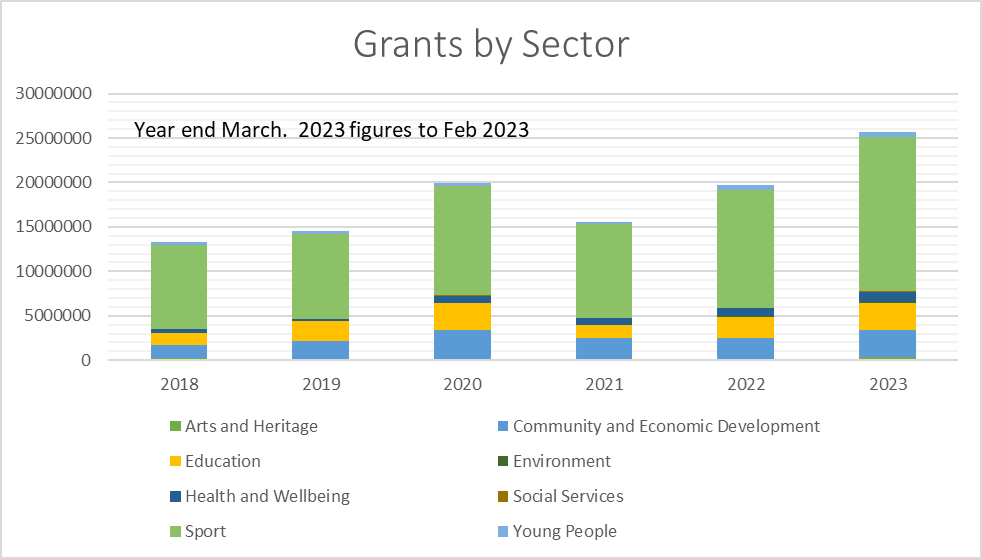
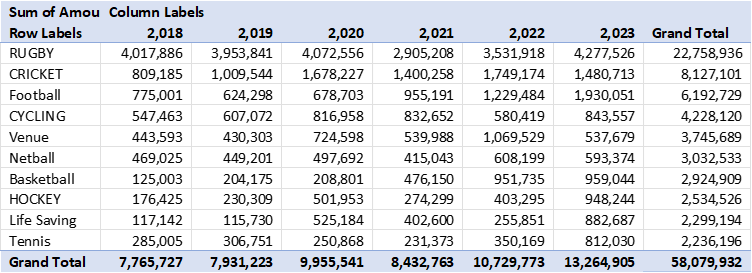
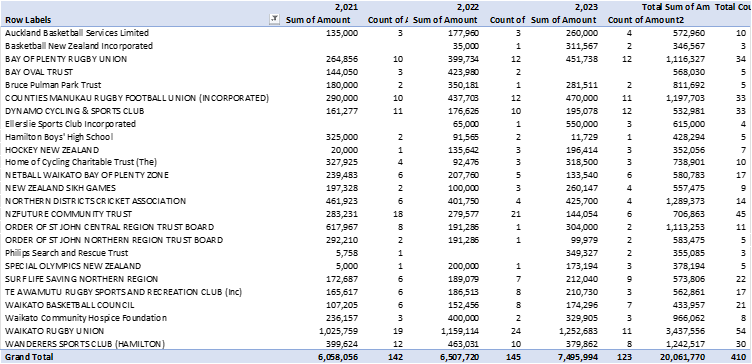
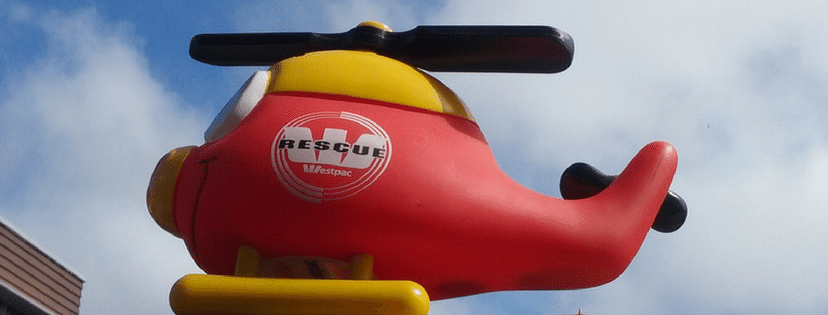
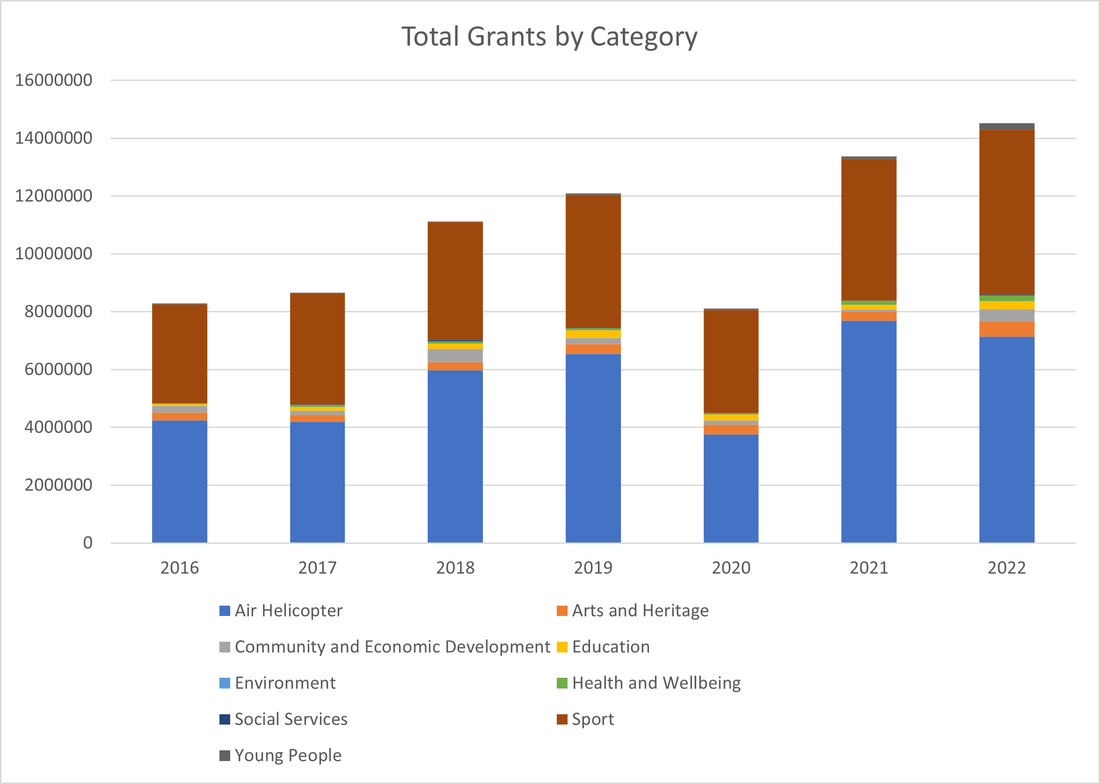
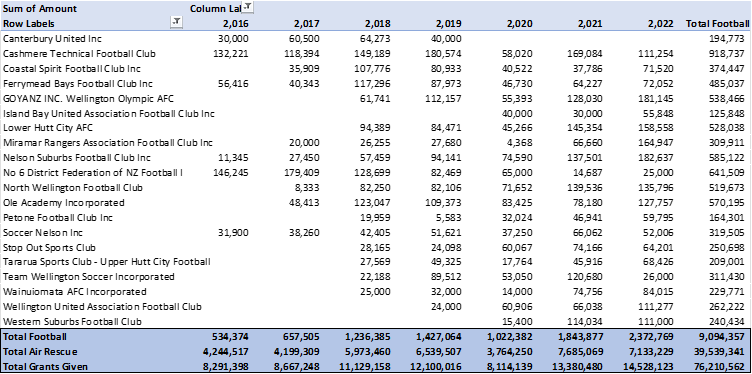
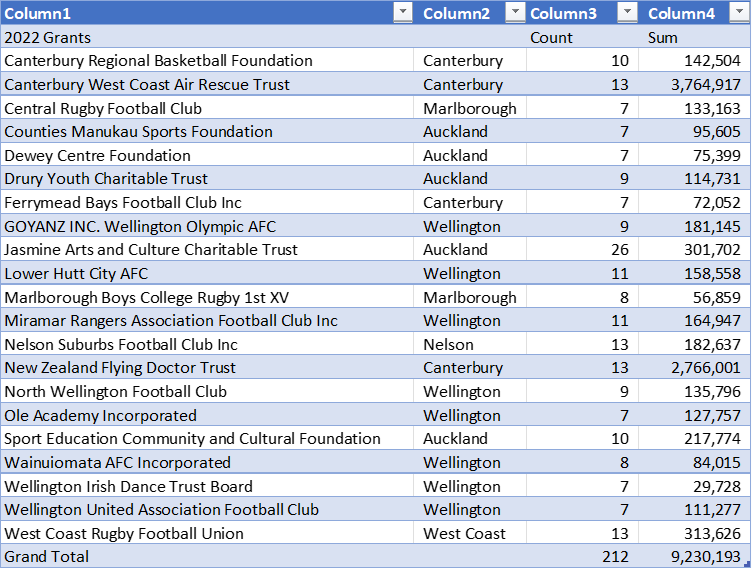

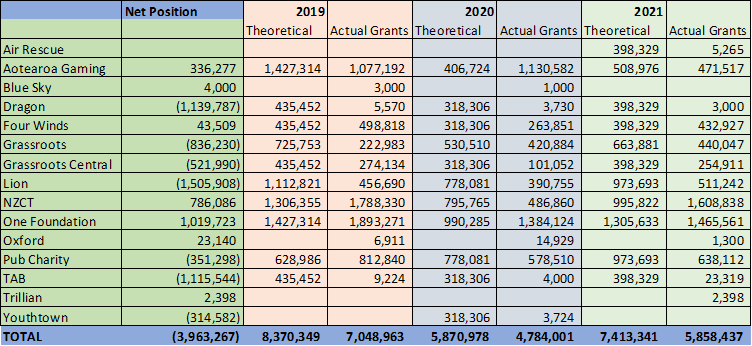

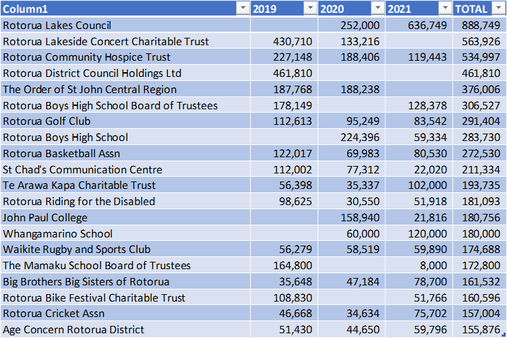

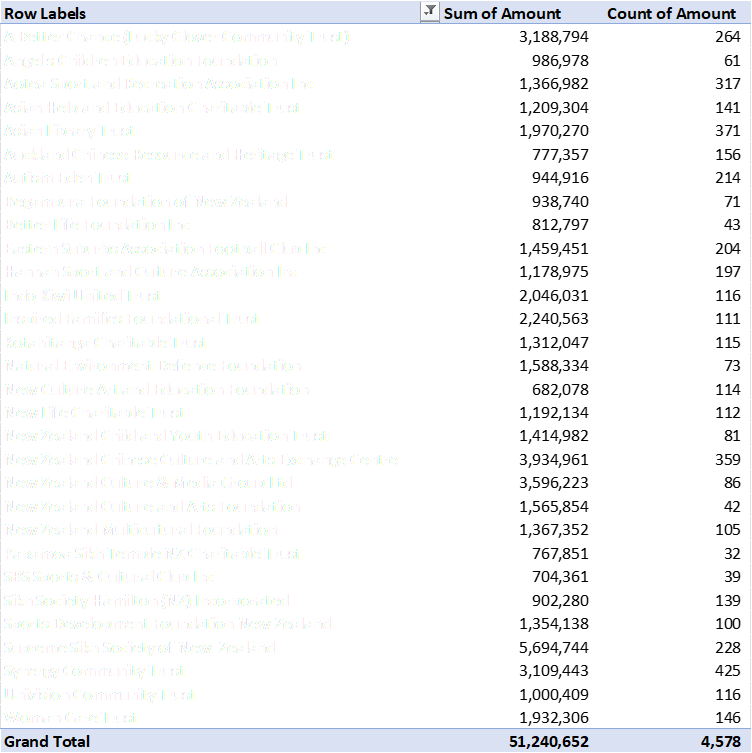
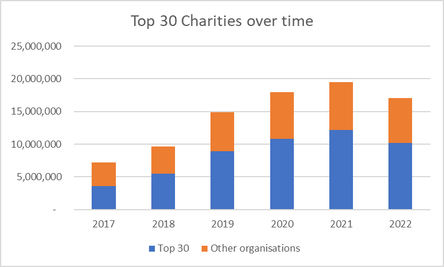



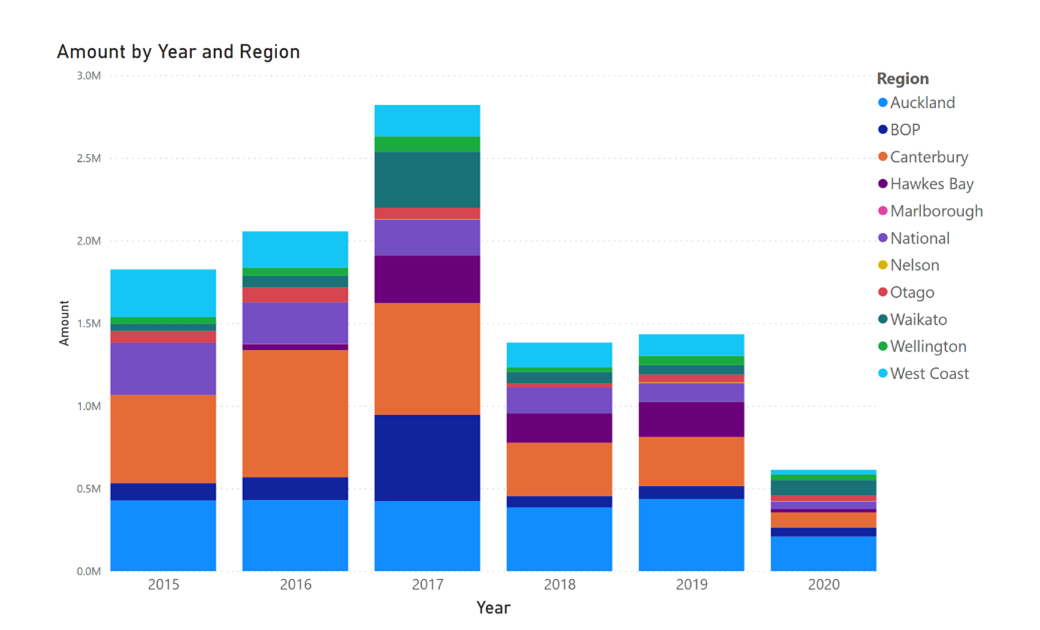
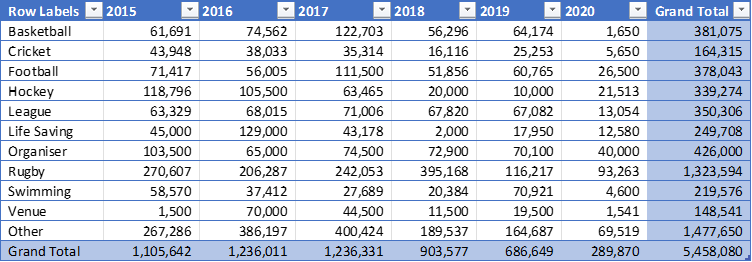


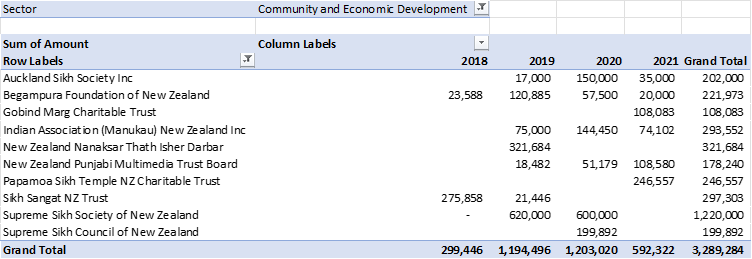

 RSS Feed
RSS Feed